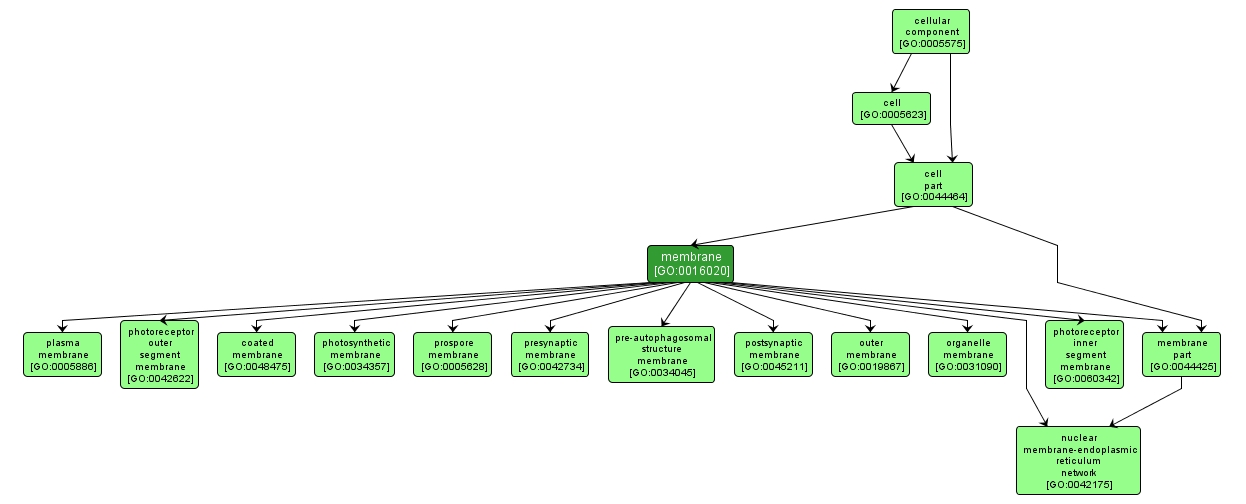GO TERM SUMMARY
|
| Name: |
membrane |
| Acc: |
GO:0016020 |
| Aspect: |
Cellular Component |
| Desc: |
Double layer of lipid molecules that encloses all cells, and, in eukaryotes, many organelles; may be a single or double lipid bilayer; also includes associated proteins. |
|

|
INTERACTIVE GO GRAPH
|














